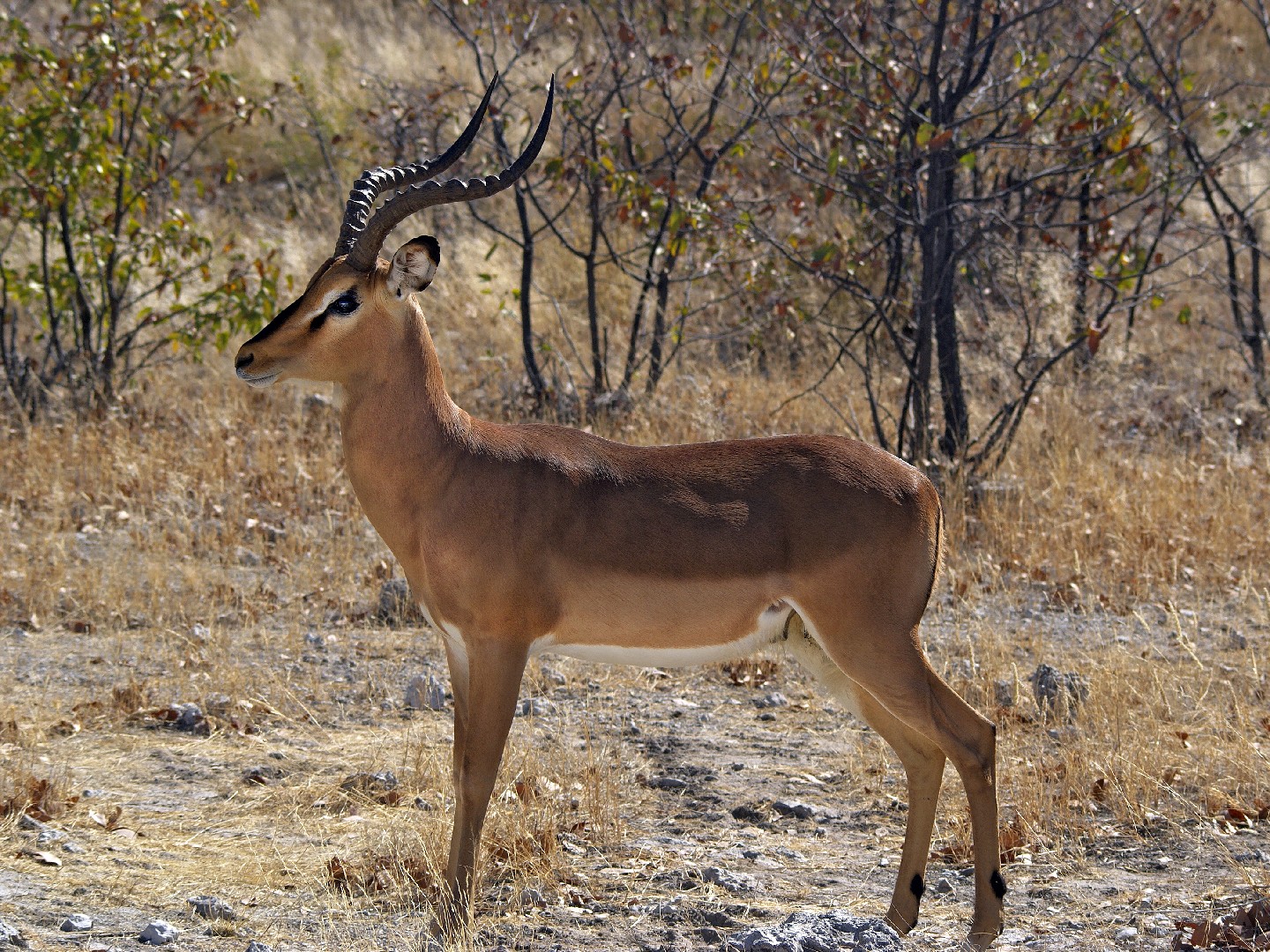Black-faced impala
A species of Impala Scientific name : Aepyceros melampus petersi Genus : Impala
Black-faced impala, A species of Impala
Scientific name: Aepyceros melampus petersi
Genus: Impala
Content
Description General Info
 Photo By Hans Hillewaert , used under CC-BY-SA-4.0 /Cropped and compressed from original
Photo By Hans Hillewaert , used under CC-BY-SA-4.0 /Cropped and compressed from original Description
Black-faced impala resides predominantly in Southern Africa and has evolved a diurnal grazing routine to manage the region's temperature extremes. It is noteworthy for its unique breeding system, whereby dominate males monopolize access to receptive females through a practice known as 'lekking'. This behavior, coupled with its ecological role as a primary consumer, makes an important contribution to the biodiversity of its savannah ecosystems.
General Info
Lifespan
12-17 years
Diet
Black-faced impala primarily feeds on grasses, focusing much of its grazing on short, green grass types. This species exhibits a particular preference for Cynodon dactylon, also known as Bermuda grass.
Appearance
Black-faced impala is a medium-sized antelope with a slender, streamlined body. Its short, glossy fur is uniquely colored, featuring a bright chestnut-brown on top which gradually fades into white on the undersides. Distinctive black stripes trace the back of each thigh. The males boast sharp, lyre-shaped horns. In contrast, females and young ones are smaller in size and lack horns.
Behavior
Black-faced impala exhibits prominent gregarious instinct, forming herds typically led by dominant males. Known for their unique 'pronking' or stotting display, these leaping maneuvers serve as a predator evasion strategy. They also possess a unique vocal communication style, including alarm whistles. Territorial behaviors are prominent during mating seasons, with males aggressively defending their space.